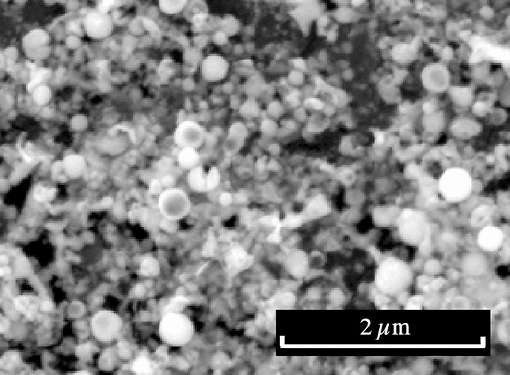Dy2O3(Dysprosium Oxide) Nanoparticles and Applications of Dysprosium Oxide Nanopowder
Dysprosium Oxide (Dy2O3) is a chemical compound which consists of a rare metal Dysprosium and Oxygen. It is a solid in room temperature and has a very high melting point which is 2408 °C.
Uses and Properties of Dysprosium Oxide
Dysprosium Oxide is suitable for ceramics, glass, phosphors, lasers and metal halide lamps applications. This compound is used in electronics industry as an antireflection coating in photoelectric devices. Because of dysprosium's high thermal-neutron absorption cross-section, Dysprosium-Oxide–Nickel cermets are used in neutron-absorbing control rods in nuclear reactors. Dysprosium and its compounds are highly susceptible to magnetization, they are employed in various data-storage applications, such as in hard disks.
Why Nanoparticles are Important?
An image of dysprosium oxide nanoparticles, obtaine

d with a scanning electron microscope Quanta 600 FEG*
Application Areas of Dysprosium Oxide Nanoparticles
There are many applications that Dysprosium oxide nanoparticles can be used. For instance Dysprosium oxide nanoparticles can be used as a high surface area for catalytic compounds. For fluorescent materials Dysprosium Oxide nanoparticles are dopants. Dysprosium oxide nanoparticles are also used in measurement of neutron energy-spectrum. For glass material in laser-based and optical devices with a Faraday Rotation affect Dysprosium oxide nanoparticles can be used.
Technical Properties of our Dy2O3(Dysprosium Oxide) Nanoparticles, 28nm, High Purity 99.95+% product
|
You may find Dy2O3(Dysprosium Oxide) Nanoparticles, 28nm, High Purity 99.95+% by clicking the link below:
Technical Properties of our Dysprosium Oxide, 99.99%325 mesh product
Purity %
| 99.99 |
| Color | white |
| SIZE (mesh): | 325 |
You may find Dysprosium Oxide, 99.99%325 mesh by clicking the link below:
https://nanografi.com/rare-earth-materials/dysprosium-oxide-99-99-325-mesh/
*https://www.researchgate.net/figure/An-image-of-dysprosium-oxide-nanoparticles-obtained-with-a-scanning-electron-microscope_fig2_318678438
Comments
Post a Comment